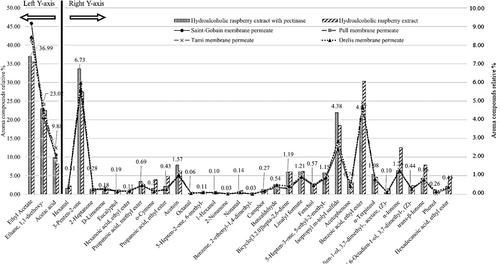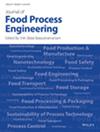Coupling crossflow microfiltration and nanofiltration for the concentration of aroma compounds in a raspberry hydroalcoholic extract
Abstract
This work investigated the coupling of microfiltration (MF) and nanofiltration (NF) to concentrate the volatile compounds in a raspberry hydroalcoholic extract. Enzymatic treatment increased the MF permeate flux by 30%–50%. The highest MF permeate flux was above 50 kg·h−1·m−2 at a mass reduction ratio of 5. MF allowed efficient clarification of the extract without significant retention of aroma compounds. Among the NF membranes tested using the MF permeate as feed, one membrane was clearly more effective in concentrating the extract in terms of flux (19 kg·h−1·m−2 at 35 bar), retention of aroma compounds (average retention of 85%), phenolic compounds (61%) and dry matter (90%). Three other membranes were of interest for the fractionation of volatiles in both permeate and retentate but with a lower permeate flux. Finally, one membrane retained few aroma compounds but showed 70% dry matter retention, making it a promising method for aroma purification versus dry matter content in the permeate.
Practical Applications
In this study, we investigated the coupling of crossflow MF and NF with a pectinolytic pretreatment, in order to concentrate the aroma compounds from a raw organic raspberry extract. The aim was to avoid aroma degradation and reduce the operating costs, compared to the conventional concentration thermal technologies. Few authors have studied aroma concentration by NF, which presents an interesting area of research for industrial applications. This work provides keys for flavor manufacturers to add value to their products at a low cost and with limited environmental impact, producing concentrated natural aroma extracts for food. Another originality of this work for industrial companies was to show that thanks to the same process, several fractionations could be achieved simply by modifying the operating conditions. Therefore, this work contributed to propose new applicable processing for the production of natural flavors in a context of high consumer and market demand for organic ingredients.


 求助内容:
求助内容: 应助结果提醒方式:
应助结果提醒方式:


